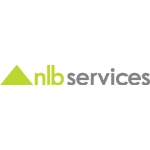© 2025 Next Level Business Services Inc. All Rights Reserved.
What is Succession Planning in HR? – All You Need to Know
By NLB Services
Succession planning in HR means any critical position should not be left vacant for a long period of time. Also, HR should ensure that the employee serving in the company is apt for the role and properly fulfilling his/her duties. Whether he/she has the potential to perform the tasks well and possess the knowledge and skills required for the job. Knowing who is in the line to fill the vacant position and mentoring the existing employee to become your company’s next generation can be the case as well. As per SHRM survey there were only 21% of companies who had a formal succession planning in place. Whereas, 24% had an informal plan or none. In our blog, we will discuss the meaning, importance, and best practices required for effective succession planning for your organization.
Understanding Succession Planning
Meaning or Definition of succession planning
Succession planning in HR is the method of selecting and developing key talent within the organization to ensure the continuity of critical roles. Succession planning is all about identifying top performers and potential employees in the company who hold leadership qualities and who can be mentored and guided in a way that they go to top-level roles in the future.
Employees get promoted, move to other companies, and retire. It is a usual process. That’s where there is a need to have a solid succession plan in place to ensure positions are filled by people who well deserve to stay in the company and who have potential.
Importance of succession planning for organizations
Successful succession planning is significant for a company because it helps grow your existing talent, boost employee engagement, save money on hiring external employees, and spend a lot on their salary. A planned succession strategy along with employee retention strategy has a structured approach and helps to prepare a new generation of leaders who are nowhere else but in the company itself, working to steer the organization forward.
Goals and objectives of succession planning
A succession plan reduces risk and disruption in case of an unexpected departure. Many companies do not take time to hire new leaders, so they are tossed in to figure it out as they go. In this situation, succession planning gives a chance to hire a high-performing employee who has a clear career path in their mind which can be helpful for an organization.
Important Elements of a Successful Succession Plan
Identifying key positions
In an organization, there may be a couple of key positions or many. The chief staff officer should be deciding if hiring for the position is really necessary, whether the key role is critical to the success of the organization, and if the chosen person for this role suddenly leaves or is unavailable for the same then it may become a risk for the organization.
This takes us to the next step. Most organizations focus on their senior managers or supervisors for the second level of succession management.
Assessing current employees
It requires the identification of a member within the company who is willing and able to take on the leadership challenges of the business. In some instances, companies may decide to hire an external executive to run the business. A well-defined onboarding process helps with succession planning within the organization. It’s a process of finding a new member among the existing employees as you make your own transition into what comes next.
Developing and training future leaders for Growth
An organization may have several employees who demonstrate the right knowledge and skills, and hold the potential to develop to a level of additional responsibility while being in the company. Then it is the company’s role to train those employees in a way that they become eligible to acquire the position of future leaders.
Creating a timeline and implementation plan and measuring it
Every organization should determine which metrics work well in their unique context right from abstracting ideas like engaging employees to getting them ready for quantifiable objectives such as volume. of sales and revenue. The goal should be to have a broad view of the overall succession plan, with its costings, general effectiveness, and how it is going to impact the company’s future.
Steps for Creating a Succession Plan
Analyzing current workforce demographics
Analyzing existing workforce and cross-checking with them if they are ready to take on the new challenges gracefully.
Identifying high-potential employees
Once you have handled the ripple effect of the sudden departure of employees from your organization, choose potential team members who can easily fit into their shoes. Along with that, ask yourself if you were to hire for X position internally, which employees could have been the strongest contender for the role. Would those candidates need training? And, if so, what type?
Defining job requirements and key competencies
Employers should prepare themselves in advance for blackouts or retirement by defining job requirements and key competencies at a larger level.
Developing career paths and training plans
Employees get more engaged when they see and believe that their employer is concerned about their career growth and can offer avenues to reach individual career goals while fulfilling the company’s mission. A defined career development path provides employees with an ongoing mechanism that ultimately helps them to enhance their skills and knowledge.
Best Practices for Succession Planning
Involve senior leadership
People who have made up their minds to leave or who are going to take retirement should be impaneled to the interview committee when the company is considering succession planning. Their presence will add an expert’s vision and they will be able to choose the best employee for the position, after them.
Communicate effectively with employees
Communication is the key. When a person is going to get retired, HR should circulate a message internally and ask for nominations for the role, which is going to get vacated.
Encourage employee engagement
Either the nominations can be done through mail or can be done via voting on the floor in everybody’s presence. It will then be easy to take a poll from a live audience and select the next leader in front of all.
Benefits of Succession Planning
Promoting employee retention
Who doesn’t want to get promoted? But there are very few who take it as a challenge and then do the work with full commitment. Succession planning not only promotes employee retention but also increases trustworthiness for both parties.
Preparing for unexpected departures
Succession planning helps to prepare companies for the sudden leave or retirement of employees.
Developing future leaders
Determine who is interested in taking up the challenge and has the potential to fill key areas and positions. Discuss their career plans and identify the key areas where they would suit well in the future. Chase them to know their vulnerability to advance their skills and their competencies could be developed within the required time frame. Make sure that a sufficient number of candidates and members of designated groups are in feeder groups for key areas and positions.
Maintaining organizational stability
When an existing employee is promoted to the next level, it fosters trustworthiness and stability within the organization and also saves the company’s costs.
Challenges and Limitations of Succession Planning
Lack of trust
Without a complete attitude of confidence and trust, it’s hard for a leader to commit to the idea of succession fully.
When as a company you are convinced that nobody can fill that particular leader’s shoes then it becomes very tough to trust someone for the position. When you’ve put in years of personal energy toward holding a company together with that leader, how can anyone new simply ‘take over’?
Selecting the wrong successor
Sometimes, succession planning is hampered by a wrong selection. An insecure leader who himself is not confident if he can achieve or will be safe in the company or maybe less qualified can ruin the entire scene. Putting the wrong person in a principal role, due to lack of focus or self-protective instincts will hurt the company in the long run. Choose the one who has the right skills and talent to lift up the whole organization.
No support to the successor
A leader is chosen, great! but are you failing as a company to extend a helping hand and support the successor? Without proper support, he/ she won’t be able to perform well. At the same time, after acquiring a new position, he/she should not be micromanaging things. He/she can appear controlling to others and might snatch the freedom of others to work independently.
Choosing multiple successors
Selecting multiple successors, because you thought all of them are well deserving, can be dangerous too. In this scenario, either one will be the top performer and the other one would be ill-suited for the role and will create lots of roadblocks.
Unawareness of personality factors
A stable and agreeable leader can allow things to move forward smoothly. Whereas, the one who is in fear of project completion can sabotage the peaceful transfer of power. Leading to the incompletion of the project.
Conclusion
Succession planning is a form of business strategy that involves passing leadership roles on to other employees. The purpose of doing so is to ensure that businesses run smoothly after employees retire or leave the organization. Succession planning involves cross-training existing employees for their skill development, knowledge gain, and business understanding.
Succession planning can be long-term and is meant to account for future changes or emergencies whenever anything unexpected arises.
Talent Solutions








